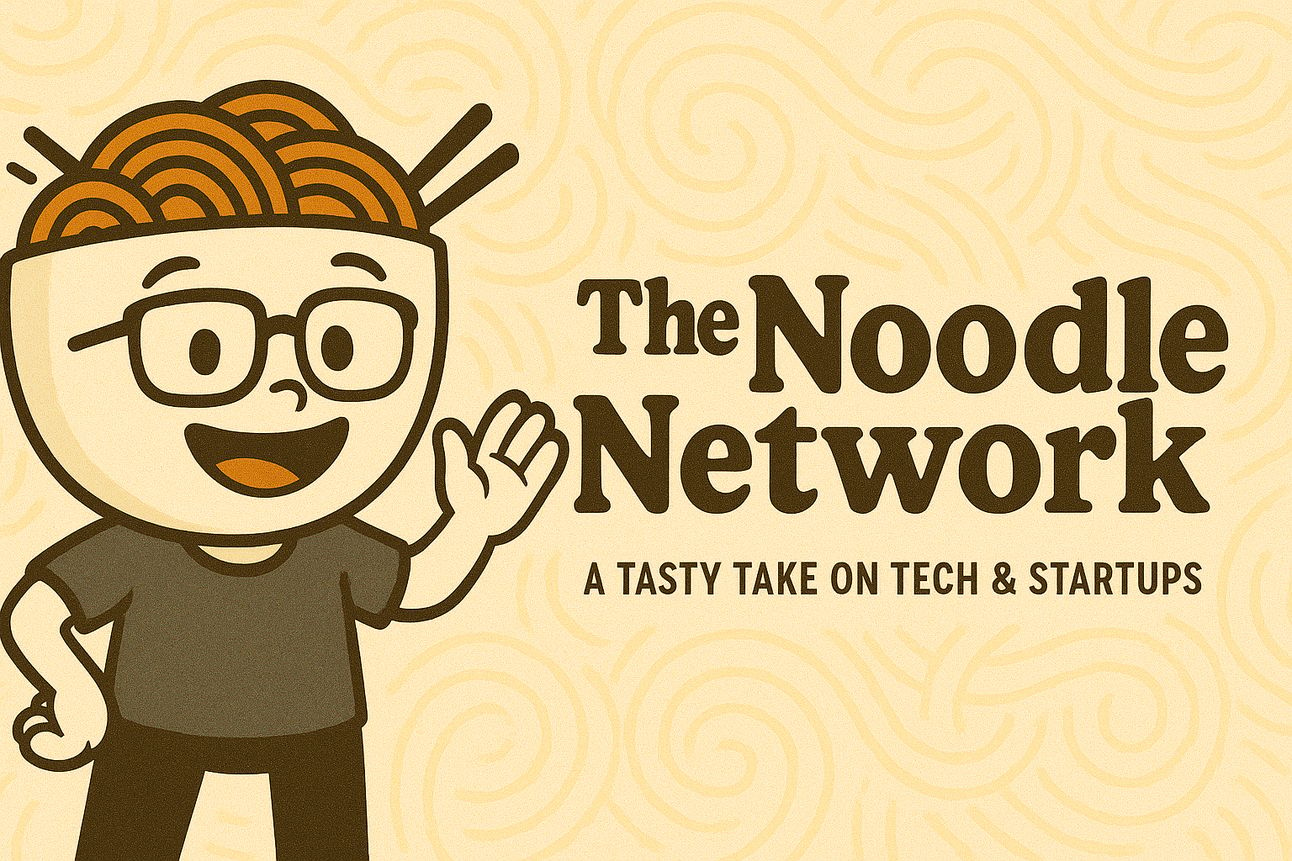- The Noodle Network
- Posts
- 🍜 New AI chips to rival Nvidia..
🍜 New AI chips to rival Nvidia..
Qualcomm just unveiled new AI chips to rival AMD and Nvidia...
Welcome, Noodle Networkers.
Silicon giants are throwing punches, investors are swimming in cash, and your bank just got a digital bodyguard. Let’s unpack the madness. Qualcomm just unveiled new AI chips to rival AMD and Nvidia. It’s like the quiet kid in class suddenly challenging the valedictorian to a rap battle and actually winning. The chip wars just got juicier. 📈 Mercor hit a $10 billion valuation after a $350 million funding round. The company basically turned hiring AI talent into a Wall Street fantasy draft, and investors can’t stop throwing money at it. 💰 And Starling Bank launched an AI tool to detect scams before you do. It’s like having a cybersecurity mom that says, “Don’t click that link, sweetie.” 🛡️
From chip brawls to billion-dollar bragging rights to AI playing financial detective, the tech circus is in full swing. Let’s dig in.
In today’s AI digest:
Qualcomm unveils new AI chips to rival AMD and Nvidia 📈
Mercor hits $10B valuation after $350M Series C funding round 💰
Starling Bank rolls out AI tool to detect and prevent scams 🛡️
Read time: 5 minutes
WHAT’S HAPPENING TODAY
(source: CNBC)
📈 The Digest: Qualcomm just dropped two new AI chips, the AI200 and AI250, taking aim at Nvidia and AMD’s dominance. The company that once lived in your smartphone is now gunning for your data center. It is like watching a phone chip go through a full-blown glow-up.
Key Details:
⚙️ Meet the New Contenders
The AI200 launches in 2026 with up to 768 GB of memory per card, while the AI250 arrives in 2027 with even faster performance and better efficiency. Qualcomm basically said, “We can play in the big leagues now,” and showed up with hardware that means it.
🧊 Chill Under Pressure
Both chips are built for AI inference workloads and come with liquid cooling. Yes, these chips are so powerful they literally need to be bathed to stay calm.
📊 Wall Street Is Loving It
Qualcomm’s stock jumped after the reveal as investors suddenly remembered the company does more than make phone parts. Somewhere in Silicon Valley, Nvidia just raised an eyebrow.
🖥️ Efficiency Meets Ambition
Qualcomm is pitching these chips as the smarter, cheaper alternative for large-scale AI operations. It is trying to be the sensible middle child between Nvidia’s muscle and AMD’s ambition.
Why It Matters: The AI chip war just got another serious player. Qualcomm’s leap from mobile processors to AI supercomputers shows how fast the tech landscape is shifting. If all goes well, your next AI-generated masterpiece might be powered by the same company that keeps your phone from overheating during Netflix.
Mercor
(source: TechCrunch)
💰 The Digest: Mercor just scored a massive 350 million dollar Series C round, catapulting its valuation to 10 billion. The startup connects AI labs with human experts, proving that even in the age of automation, someone still has to tell the robots they are wrong. Investors are calling it the “LinkedIn for AI brains,” which sounds both brilliant and slightly terrifying.
Key Details:
📈 From Two to Ten Billion in Months
Mercor jumped from a 2 billion valuation to 10 billion in less than a year. That is faster growth than ChatGPT’s ability to write bad poetry about your boss.
🧠 Experts on Demand
The company links professionals like scientists, doctors, and lawyers with AI labs that need specialized knowledge. It is basically Uber for smart people, except you do not have to tip your AI collaborator.
💸 Big-Name Backers
Felicis Ventures led the round with help from Benchmark and General Catalyst. Translation: the grown-ups of Silicon Valley just decided this might be the future of human relevance.
📊 Money Talks, AI Listens
Mercor says it is on track for 500 million in annual recurring revenue. That is a lot of cash for a company that essentially monetizes “being smarter than a neural network.”
Why It Matters: Mercor’s success proves there is still profit in keeping humans in the loop. As AI gets stronger, someone needs to explain why its medical advice shouldn’t include “try turning it off and on again.” If this keeps up, being human might finally pay as well as pretending to be one.
Online banking
(source: YahooFinance)
🛡️ The Digest: Starling Bank just launched an AI tool to help customers spot and stop scams before they happen. Finally, someone is teaching machines to recognize red flags better than humans on dating apps. The new feature scans listings, messages, and prices to warn you when that “too good to be true” deal really is too good to be true.
Key Details:
🔍 Scam Detector 3000
The tool uses Google’s Gemini model to analyze images, prices, and seller messages across sites like Facebook Marketplace, eBay, and Etsy. If the AI sees something shady, it alerts you—basically a digital friend whispering, “Don’t buy that PlayStation from a guy named ‘Crypto_Dave.’”
📊 Tested and Proven
Starling says the tool helped increase payment cancellations by up to 300 percent during trials. In other words, three times more people avoided sending money to scammers selling imaginary puppies.
⚠️ Smart Enough to Judge You
The AI can identify about 90 percent of typical scam tactics, from stolen images to fake urgency. It’s not judging your shopping habits, but if you fall for a $20 Rolex, it might silently question your life choices.
🏦 Bank Becomes Babysitter
Starling wants to make scam prevention part of everyday banking. Think of it as a cautious financial guardian who steps in right before you make another “once-in-a-lifetime” purchase from a suspicious account named “Definitely_Real_Store.”
Why It Matters: Online scams are everywhere, and now AI is finally fighting back. If your bank starts sending you sassy warnings about your spending habits, take it as love. Starling’s new tool might not stop you from buying overpriced candles, but it just might save you from funding a Nigerian prince’s “AI startup.”
THE NOODLE LAB
AI Hacks & How-Tos
The Digest:
Diffusion Art tools let you generate striking, photo-realistic images by typing text prompts. These make heavy use of diffusion models, which gradually build visuals from noise into a finished piece. If you’ve ever wanted to describe an idea and watch it turn into a work of art, this is how.
⚙️ How-to:
Visit the Platform
Go to your chosen tool (for example one built on Stable Diffusion) and sign up or log in. Many give free credits for a trial.
Enter Your Text Prompt
Type a clear, vivid description of what you want to see: e.g. “sunrise over a serene mountain lake, ultra-detailed, cinematic lighting”. The more detailed your prompt, the better the result.
Adjust Settings (Optional)
If available, tweak parameters like image size, style, color palette, or customize creativity level. These settings help tailor the output.
Generate & Review
Click “Generate” and wait a few seconds for your image. Review the result and decide if you like it or want variation.
Refine with Edits
If your art isn’t perfect yet, refine the prompt or use features like image-to-image, inpainting, or regenerate variations until you’re happy.
Download & Use Your Image
Once satisfied, download the image. You can use it for artwork, social posts, graphic design, or any creative project.
Explore More: Dive into guides on diffusion models to understand styles, fine-tuning, and how different models behave.
Trending AI Tools
Fireflies.ai – Automates meeting transcription, summaries & action-items.
Diffusion Art – Creates high-quality AI art through diffusion models.
Typedream – No-code website builder designed for creators and side-hustlers.
My AskAI – Set up AI support agents that handle customer questions from your data.
Motion – AI platform that turns text or images into animated visual content.





